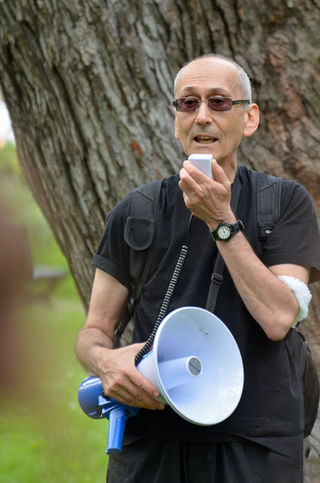
What, when, and how do nonhuman animals feel?
Source: Gundula Vogel/Pixabay.
In late 2015, a new journal was founded that dedicated itself to the investigation of animal sentience: that is, the capacity of animals to experience subjective states such as pleasure or pain. Its official title: Animal Sentience.
What follows is an introduction to the journal and an interview with Dr. Stevan Harnad on the first four years of Animal Sentience.
When founded in 2015, the journal’s official aims and scope were stated as follows:
The objective of Animal Sentience is to increase scholarly, scientific, and practical understanding of (1) the capacity of nonhuman animals to feel and (2) species similarities and differences in what and how they can feel, and why. Sensations and perceptions, including pain and pleasure and the many varieties of emotions, are central to a feeling organism’s quality of life. With the rapid growth in the study of mental states in both human and nonhuman animals, there is the need for a journal devoted specifically to sentience in all species of animals. The scope of Animal Sentience is accordingly broad. Submissions are invited from disciplines spanning the physical, biological, and social sciences, the humanities and beyond, including technology, the arts, law, media, and public policy. The perspective can be physiological, psychological, behavioral, cognitive, ethological, ecological, veterinary, philosophical, ethical, legal, political, or practical.
Walter Veit: Why was the journal Animal Sentience founded?
Stevan Harnad: With the 2012 Cambridge Declaration on Consciousness, scientists formally acknowledged what had already been obvious to almost everyone: that nonhuman animals feel. Feeling can be anything from warm/cold to colour to sound to texture to pain/pleasure to understanding.
In 2014, the Institute for Science and Policy decided it was time to found a peer-reviewed journal devoted to animal sentience. Animal Sentience was founded in 2015, and the inaugural year of publication was 2016.
Walter Veit: How interesting! How did you end up becoming the editor of Animal Sentience?
Stevan Harnad: Andrew Rowan, then Director of Humane Society International, who had been an Associate of the journal Behavioral and Brain Sciences (on which Animal Sentience is modeled, and of which I had been editor-in-chief for nearly 25 years) invited me to co-edit the new journal with him and Jonathan Balcombe.
As described in the interview with Marc Bekoff in 2015, I accepted immediately (even though I had vowed I would never edit another journal!), because where there is feeling, feelings can be hurt. And protecting animals from suffering had (much too late) become the meaning of life for me.
So, unlike with Behavioral and Brain Sciences, there is an explicit bioethical dimension to this journal. What the two journals have in common is that they both provide Open Peer Commentary: Articles are peer-reviewed not only for scientific soundness but also for whether the field would benefit from providing them with critical commentary solicited from specialists across disciplines and around the world, followed by the author’s response.
These days, with increasing consciousness about animal sentience in the research community as well as the general public, it is especially important to have a venue and a means for knowledgeable experts to discuss this important and controversial domain openly.

Stevan Harnad: an early revolutionary for open science and animal welfare
Source: Stevan Harnad
Walter Veit: Where has the field of animal sentience moved in the past four years?
Stevan Harnad: The recognition and understanding of animal sentience have been moving steadily “downward” in evolutionary terms, from primates to other mammals to birds to fish and other vertebrates, and now to invertebrates such as the octopus.
Which species can feel? And what do they feel, and how? And why? What was the evolutionary advantage of the different sentient capacities that have evolved in different species (such as echolocation in bats or empathy in mammals and other social species—or pain itself)?
We know more and more about what nonhuman species can feel and do, and why: about their “biological imperatives.” And with that growing knowledge, we are becoming more and more aware of how our own species is harming other species—going against their biological imperatives in the service of our own in the Anthropocene. One increasingly important bioethical issue is about how much of this “anthropogenic” harm is justified by human survival imperatives, and how much of it is gratuitous and preventable.
Walter Veit: What impact did (the journal) Animal Sentience have in these years?
Stevan Harnad: The Open Peer Commentary has made connections between research and researchers in previously disparate areas, from microbiology to robotics. The findings and discussion on pain in fish are having an impact on legislation in Europe, as is the work on octopus and on farmed species. Philosophers and bioethicists are getting more involved in scientific research findings and interpretations and vice versa. The impact is growing with time and the times.
Walter Veit: How did you personally become interested in animal sentience and welfare?
Stevan Harnad: …click here for part 2 of this interview!


